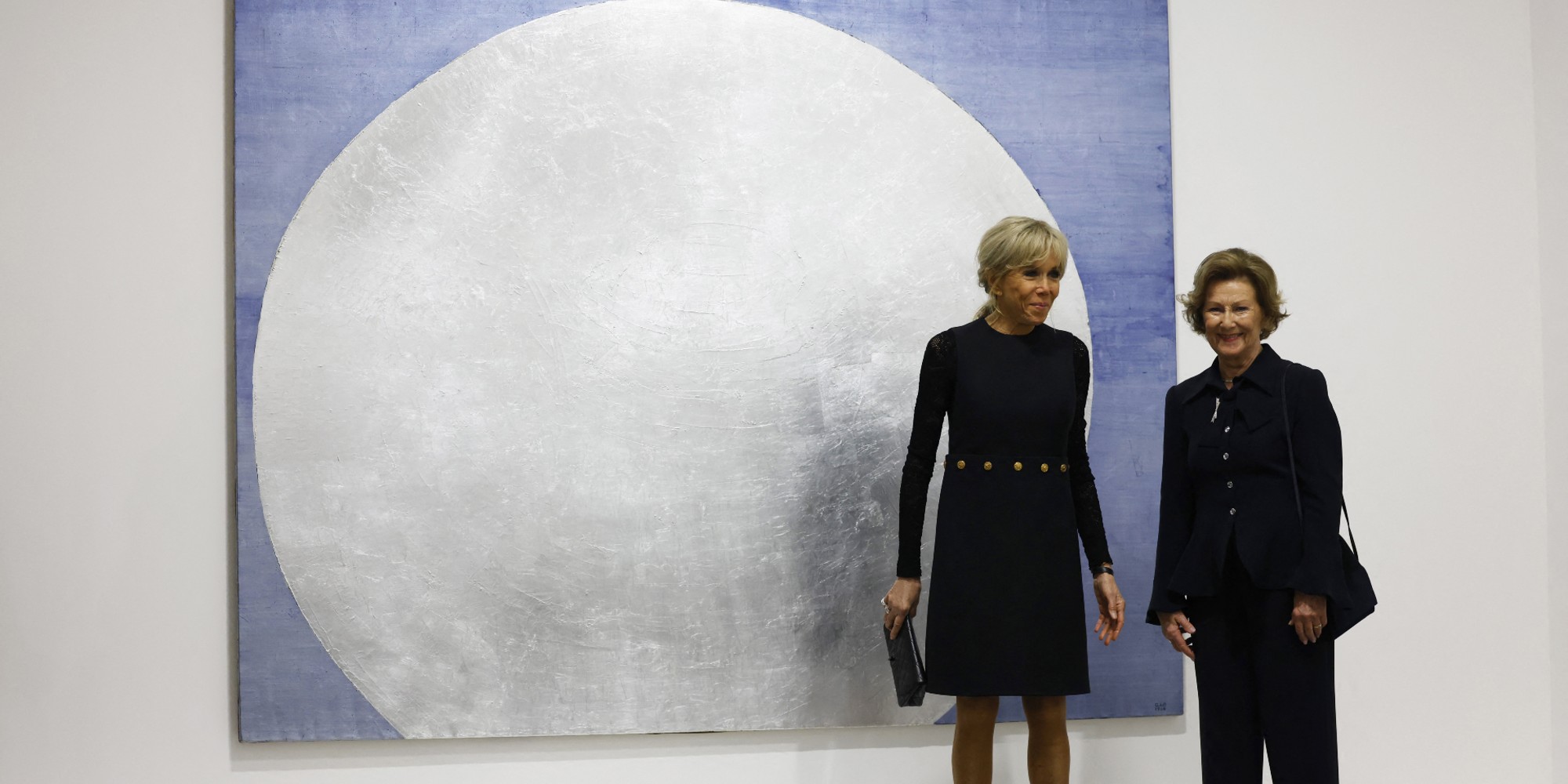Marie Gicquel, edited by Loane Nader / photo credit: LUDOVIC MARIN / AFP 09:56, May 30, 2023
At the moment, the Museum of Modern Art in Paris allows you to travel to the stars thanks to the cosmic exhibition of the Franco-Norwegian painter Anna-Eva Bergman, in partnership with Europe 1. The latter's works, inspired by Gustav Klimt, transport us to a time when the dream of space conquest was just beginning.Travelling through the stars and the Universe is now possible thanks to the works of the Franco-Norwegian painter Anna-Eva Bergman, currently on display until July 16 at the Musée d'art moderne de Paris, of which Europe 1 is a partner.
So get ready for a leap back in time. Back to July 21, 1969: when Neil Armstrong sets foot on the Moon. In his Parisian studio, the artist alternates between television and his easel. His paintings feature silver moons, golden stars, planets exploded on blue-black backgrounds. "There is the conquest of space and she paints stars. It's a vision she has and that, at the time, is very difficult," explains Hélène Leroy, curator of the Museum of Modern Art. "In the media, we didn't have as many pictures of the space shuttle, Thomas Pesquet and all that...", she laughs.
>> READ ALSO - Space: an asteroid, similar to a "quasi-Moon", discovered around the Earth
Metal foil painting
You will also be surprised by the small particularity of this exhibition as revealed by Hélène Leroy. "There are flashes because it is a work that is painted with metal foil. So there's this light that emanates from the paintings, which is captivating and that you might not expect until you enter the museum." Gold and silver plates, glued on the canvas, which therefore give relief, capture the light and recall Klimt's painting.
This technique is also the witness of a certain know-how. "It's the metal that's really slender, which she uses with her bare hands, which shows her very, very great mastery." As you can see, Anna-Eva Bergman takes us from the height of her Norwegian mountain landscapes to the cosmos.

